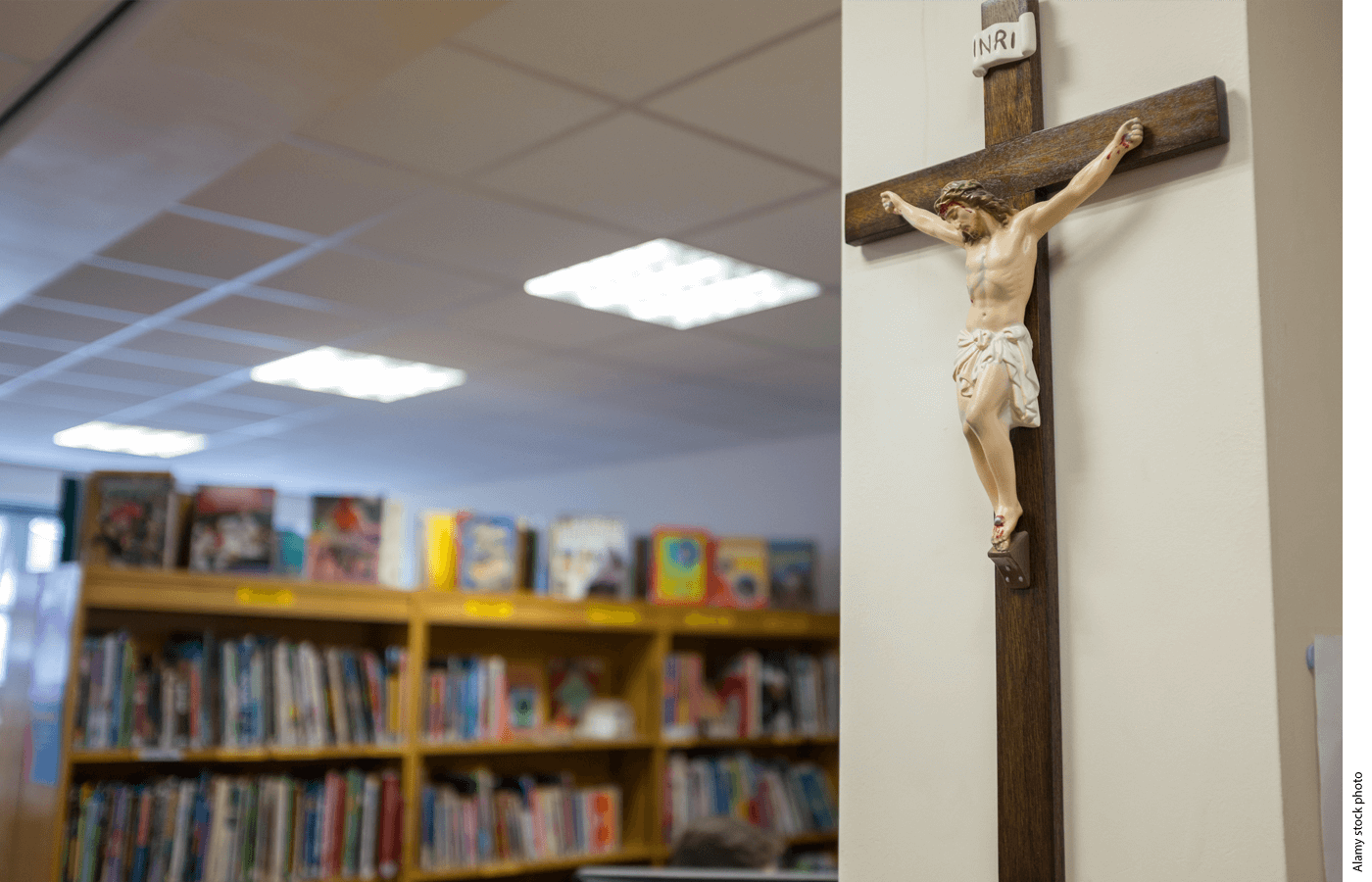
The Oklahoma Supreme Court on June 25 delivered its eagerly anticipated decision on whether the state could authorize an explicitly religious charter school. The court said no, resolving for now the issue in Oklahoma. But its inscrutable reasoning on the First Amendment’s establishment and free exercise clauses indicate that the U.S. Supreme Court will have to take up the issue—in either this case or one that will inevitably arise in another state.
Following the Supreme Court’s 2022 ruling in Carson v. Makin that excluding religious schools from Maine’s voucher program was unconstitutional, the Archdiocese of Oklahoma City and Diocese of Tulsa applied to Oklahoma’s Charter School Board to establish St. Isidore of Seville Catholic Virtual School. The board approved in a decision backed by state Attorney General John O’Connor, who cited the Supreme Court’s reasoning in the trilogy of Makin, Espinoza v. Montana (2020), and Trinity Lutheran v. Comer (2017) to justify his support. Oklahoma’s charter school law allowed other private organizations to operate charter schools, so preventing religious ones from doing so would violate the free exercise clause’s requirement that religious entities not be excluded from an “otherwise generally available public benefit.”
After 2022, however, a new attorney general, Gentner Drummond, assumed office. He promptly rejected his predecessor’s opinion and asked the board to rescind its approval. When it did not, Drummond asked the state Supreme Court to intervene. He argued that, among a parade of horribles that would result from the charter board’s action, allowing a Catholic charter school would require Oklahoma to fund a Muslim school or even “the blasphemous tenets of the Church of Satan.” In Drummond v. Oklahoma Statewide Virtual Charter School Board, a 6–2 majority of the court agreed.
Their reasoning had an inauspicious start. It held that the charter school violated Article II Section 5 of Oklahoma’s state constitution, which reads: “No public money or property shall ever be appropriated, applied, donated, or used, directly or indirectly, for the use, benefit, or support of any sect, church, denomination, or system of religion, or for the use, benefit, or support of any priest, preacher, minister, or other religious teacher or dignitary, or sectarian institution as such.” This is also known as the state’s Blaine Amendment. But the U.S. Supreme Court effectively ruled Blaine Amendments unconstitutional in Comer and Espinoza.
The court then pointed out that the state’s charter school law also requires that charter schools be nonsectarian. But no one disagreed with that. The issue was whether that requirement violates the U.S. Constitution. The court also held that the school would be a “state actor” and therefore subject to the same requirements as traditional public schools. Whether that matters though hinges on whether the First Amendment is implicated. It is on this topic that the opinion becomes difficult to reconcile with recent Supreme Court decisions.
On the establishment clause, the court cited the Supreme Court’s 1947 ruling in Everson v. Board of Education that the government cannot pass laws “which aid one religion, aid all religions, or prefer one religion over another.” This citation was peculiar since it is this “no aid” line of reasoning that led to the infamous “Lemon test” the Supreme Court killed and buried in Kennedy v. Bremerton (2022). The court held in that case that the establishment clause must instead “be interpreted by ‘reference to historical practices and understandings’.” This “history and tradition test” emphasizes how those closest to a clause’s enactment understood its meaning.
It is not at all clear from the famously strained opinion in Everson—the court cited Thomas Jefferson as an authority on the clause’s meaning when he had nothing to do with its writing or ratification—that the decision could fit with the history and tradition test. It is possible that it could, but the Oklahoma Supreme Court did not even reference the new test. Instead, it briefly mentioned Bremerton and then cited an earlier series of cases involving school prayer that could well end up being circumscribed. Even if the prayer cases end up not being curtailed, they raise completely different questions because charter schools are, by definition, schools of choice. No one would ever be compelled to participate in a charter school’s religious activities.
Even more puzzling was the court’s free exercise clause analysis. The majority argued that the Makin, Espinoza, and Comer trilogy did not apply because they involved private entities, and this case involved the “State’s creation and funding of a new religious institution.” Their reasoning, however, ignored the fact that most charter schools are operated by private corporations. That these corporations, and indeed any corporation, cannot exist without a state charter does not mean that they are state actors. Simply being authorized to operate by the state is not the same thing as being created by the state.
One could imagine, and certainly would have hoped for, a more clearly reasoned decision, but the Oklahoma court did not provide it. Even if no appeal is made in this case or if the Supreme Court declines to hear one, the thorny issues that the majority elided will come up again and need to be resolved.
In short, this decision represents at most the opening salvo on religious charter schools, not the final word.
Joshua Dunn is executive director of the University of Tennessee, Knoxville’s Institute of American Civics at the Baker School of Public Policy and Public Affairs.
This article appeared in the Fall 2024 issue of Education Next. Suggested citation format:
Dunn, J. (2024). Supreme Confusion in Oklahoma. Education Next, 24(4), 6-7.


